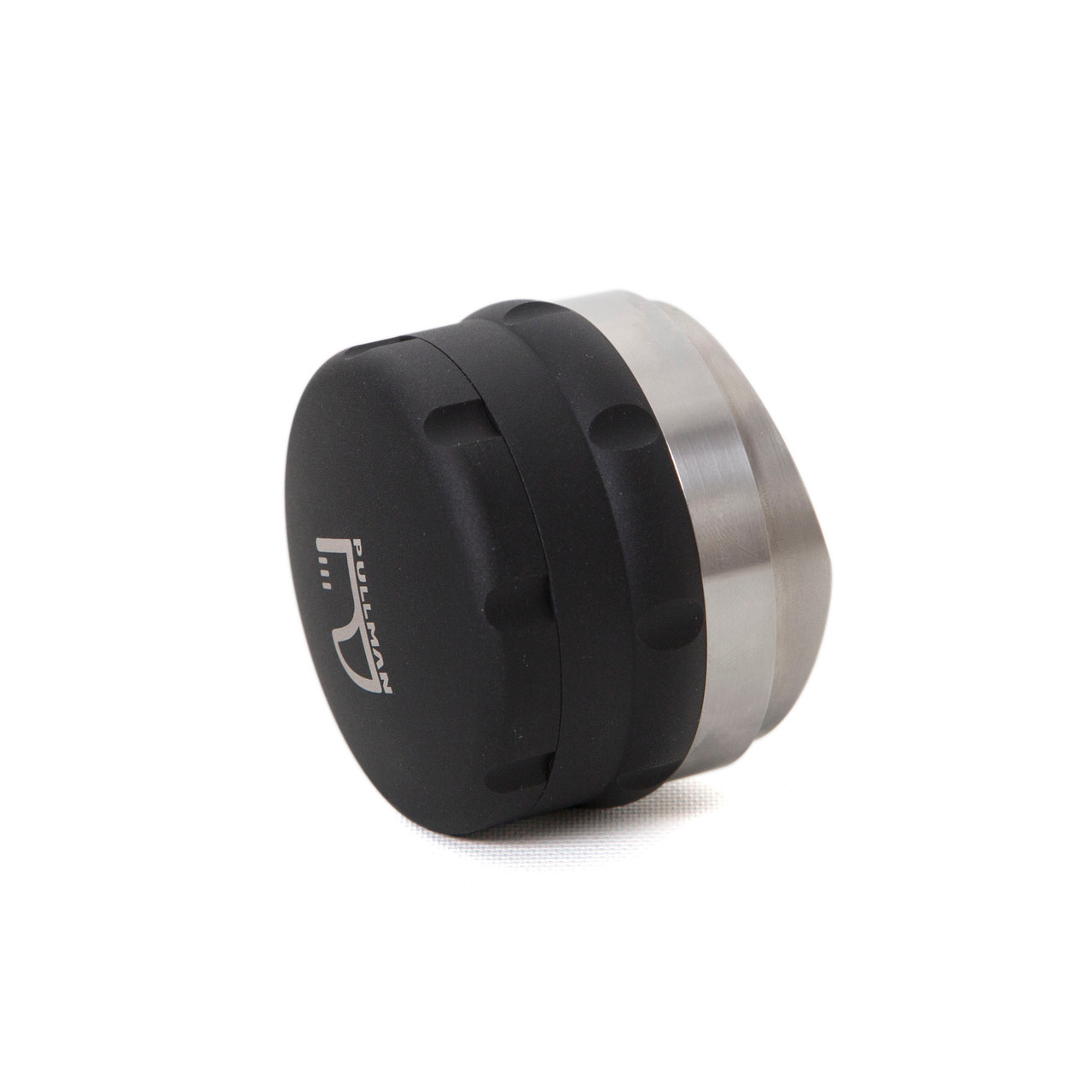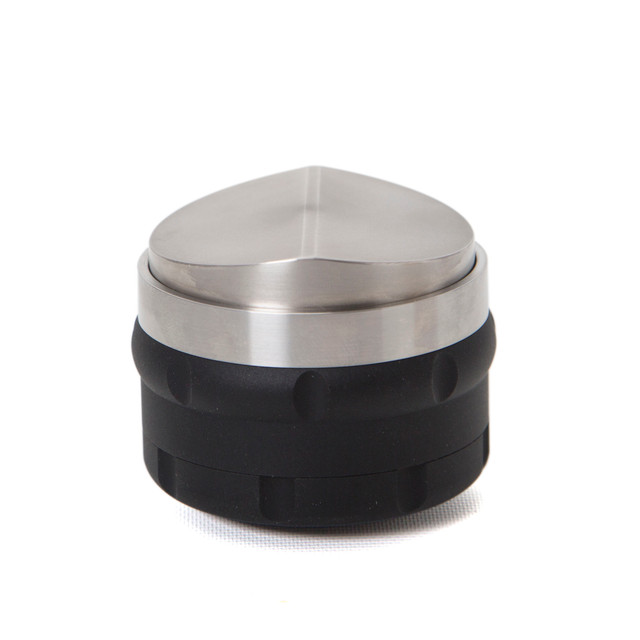A Comparison of Distribution Tools
Distribution tools are a relatively new advancement in this relatively new industry of specialty coffee. They are new because you don’t actually need them in order to make espresso, so for over a hundred years, since the invention of the espresso machine, they haven’t been around. In the second wave of coffee, the one spearheaded by Starbucks and Peet’s and company, speed and sugar took precedence over careful preparation. But as this new wave of the industry leans into quality as a defining feature, as the feature that separates it from past waves, it relies more heavily on tools that help baristas go beyond making coffee and espresso just; it relies on tools that help make coffee and espresso better. Individual transactions may be slower, if only by seconds, but this is not a deterrent to customers nor to baristas who know what counts now is quality. This quality-first attitude is what has opened the door for innovations like the Ground Control for batch brewed coffee, Litmus Coffee Labs precision sprayheads for batch brewers, and Mahlkönig’s impressively fast grind-by-weight technology, dosing exact portions in seconds. One can only guess at what part of the bar gets a makeover next.

Two Kinds of Espresso Distribution Tools
It is from deep within the third wave that distribution tools have emerged. To use a distribution tool is to put an extra step between the grinder and the tamper; but, on the other hand, to use a distribution tool is to increase the odds for a true expression of the coffee’s flavors. The most popular distribution tools on the market are of two styles: the leveler and the whisk. The leveler looks a lot like a palm tamper with a blade or blades instead of a flat surface on the bottom. When these tools are placed on the portafilter basket and rotated, the coffee grounds are, as the name says, distributed by the spinning blade or blades in the way air is by a fan. Therefore, what was once a mountain of grounds in the center of the basket becomes a flat, evenly distributed but uncompressed puck-like structure. The only thing left to do is tamp. The whisks, on the other hand, are not meant to be placed on the portafilter basket, but instead meant to be used to run wires or needles through the coffee bed to break up clumps and ensure the grounds are evenly distributed to all quadrants of the basket. A third kind—a mixture of the two—has entered the market but has yet to be seen much in the U.S. We can’t wait to get our hands on it to evaluate its efficacy.
The objective of both is the same: even density. Picture a lumpy bed of coffee in a filtration basket. It looks like a landscape of sand dunes. Some dunes are higher than others and one side is piled especially high. Tamping such a bed is possible. Tamping such a bed will make the bed appear even. But under the surface, there lurks a dark side: a difference in density. The formerly high hills will have more coffee grounds per square millimeter; they will simply be pressed more tightly together. The formerly low valleys will have fewer coffee grounds and more tiny air pockets between them because the grounds are loosely packed. When water at pressure is introduced, the air pockets, i.e., loose packs, will be exploited by the path of the water, and channeling will result, with those areas extracting much more quickly than the denser areas. This is a classic uneven extraction. Distribution tools ensure, before the tamp, all areas of the coffee bed are of similar densities, reducing the odds of channeling.
At Prima Coffee, we are fond of both kinds, and so we carry one of each. The leveler is made by Pullman, purveyors of fine tampers; and the whisk is made by Option-O, home of the Lagom.
Pullman Chisel


Pullman calls the Chisel a “redistribution” tool because, says the company (and we agree!), the first step in proper distribution is grinding into the basket and rotating the basket as the coffee dispenses. Done correctly, this will result in a bed that looks fairly level, if fluffy. The Chisel will enact the second distribution, or “redistribution,” reducing the depth of the bed, but, and this is important, not compressing the grounds. The depth of the blade can be adjusted with just a few turns of the top and base. The perfect depth is that which distributes and flattens but does not compress the coffee bed. If you find a chisel-shaped ditch in the puck after removing the Chisel, it is too deep; and if you find that the bed is still uneven after using the Chisel, the blade is not deep enough. The perfect depth is just a little trial and error away.
Features
- Adjustable depth (7mm to 14mm)
- Easy to adjust depth
- Fits 58mm portafilter baskets
- Levels the coffee bed
- Made by the espresso experts at Pullman
Considerations
- Does not break up clumps
- Must be readjusted for new coffees
- Levels only the top of the coffee bed
- Coffee may stick to the bottom and/or side
- The more expensive option
Option-O WDT Tool


For a WDT tool to work, it must be used with a portafilter funnel. Otherwise the result will a mess of coffee grounds on the counter. As such, we only sell the WDT in a set, one that includes all the tools that come with the beloved Lagom P64: a WDT tool and funnel; dosing cup (for weighing beans on a scale); and a spray bottle for those who want to use the Ross Droplet Technique to reduce static. The wires on the silver WDT tool have looped ends while the wires on the black WDT tool do not. We have not noticed a difference in performance. As with the Chisel, this tool will require trial and error to perfect. However you use it, though, one thing is certain: for it to work, you must whisk every square millimeter of the coffee bed and every layer from the top to basket floor.
Features
- Breaks up clumps that could cause channeling
- Can be used with any size basket
- Can be used with any coffee
- Produces consistently high extractions
- Designed by the espresso experts at Option-O
Considerations
- Entirely manual
- Adds an extra step in the process
- Messy (if used without a funnel)
- Takes some practice
- The less expensive option
We have written this article as if you must choose one tool or the other. In reality, though, both tools could be used in a single workflow. If you are having trouble choosing between them, no problem: get them both. You can use the WDT tool to break up the clumps and then use the Pullman Chisel to level the bed before the final step of tamping. In fact, these two, used as a dynamic duo, may produce the most consistently exact espresso possible. Let us know what works for you.



